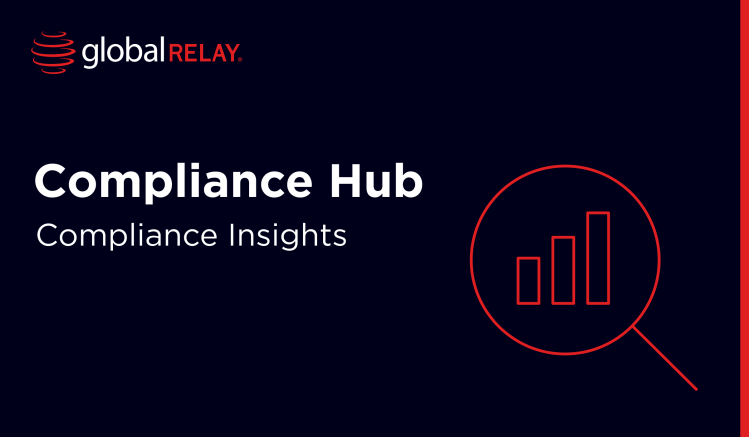
Mastering compliance audit preparation in 2025
In 2025, regulatory audits are high stakes. Many compliance professionals feel that this is the moment when their job security is at its weakest. And yet, they’re forced to battle against data access issues, uncooperative colleagues, and disorganised records.
Written by a human
Isn’t it wild that during a time of heightened time-sensitivity, all of these factors cause delays?
Compliance audit preparation is therefore an essential part of working life as a regulatory professional and must be factored into the day-to-day as teams brace for the audit itself. Learn about the best practices during your preparation, and how AI-powered solutions can help to give your team the edge, during both expected and surprise audits.
Why is compliance audit preparation important?
Compliance audit preparation refers to the organization and access of resources, including people, data, and documents, to brace the company before an audit occurs. In particular, the focus of audit preparation through a compliance lens is to ensure that your business meets its regulatory requirements.
This is a critical activity in all regulated organizations, because audits can uncover risks, errors, and failures that can lead to fines and reputational damage. Therefore, the preparation process is not only about making the resources available, but assessing them internally to identify and rectify any compliance gaps before the external auditor does.
Regulatory bodies expect companies to be prepared for their compliance audits at all times, so organizations must align their cultures to the ‘always on’ concept in order to meet these expectations.
In fact, recent trends indicate that businesses are increasingly voluntarily requesting compliance audits with reference to anti-money laundering (AML), transaction reporting, operational resilience, and cyber security in particular.
In 2024, companies that used AI and automation to their security protection (which is typically undergone during compliance audit preparation) saved an average of $2.2 million compared to those who didn’t.
What are the challenges of compliance audit preparation?
There are several key challenges associated with compliance audit preparation, including:
- managing multi-channel data
- cross-jurisdictional regulations
- non-standardized data formats
- unpreparedness risks
Managing multi-channel data
At large and enterprise-level firms, multi-channel communications are inevitable. Teams switch from email to Slack, chat to customers on the phone, and then catch up on WhatsApp as work hours draw to a close.
But with so many communication channels to monitor, it can be hard for firms to ensure they’re capturing, assessing and presenting all the data in preparation for their audit.
A centralized control and monitoring centre is therefore the best way to manage multi-channel data. One of Global Relay’s regulatory audit solutions, communications surveillance, balances a five-layered approach for enhanced decision making, including:
- Standardization and enrichment: organize data into a standard, consistent, and structured format for easy understanding
- Transcription and translation: working with more than 50 languages
- Noise reduction: filtering out irrelevant content, spam, and duplicates early to speed up your review process
- Risk identification: get automated context-based alerts through a combination of LLM and lexicon analysis
- Investigation reporting: Maintain a complete, time-stamped audit trail of all message modifications or deletions for transparency and compliance
Managing multi-channel data in this way ensures that compliance data access is as much of a priority as everything else.
Cross-jurisdictional regulations
Expanding to new countries can be great for business – but not quite as positive for compliance. From a regulatory perspective, new countries mean new audit rules, which often differ from those in the country of origin.
There are several pain points of cross-jurisdictional regulations, but we don’t think this should stop you from expanding, as there are accompanying recommendations that can alleviate much of the challenge:
| Challenge | Recommendation |
| Divergence: each region has its own set of audit standards and reporting practices | Create an internal knowledge hub of regulations, filtered by each local area for easy differentiation |
| Information security and privacy concerns when transferring data across regions | Apply the most comprehensive data protection laws across all geolocations to meet the regulatory requirements where necessary, and exceed others |
| Quality control | Develop global best practices and implement controls such as audit simulation drills to ensure these are maintained |
Non-standardized data formats
Similar to cross channel communications, data can enter the system in all sorts of formats. From Excel sheets to CSV files, HTML and TXT – firms need to be able to access (and in some cases, compare between) each type of data to prepare for a compliance audit.
One way to overcome this challenge is by implementing robust procedures to consistently standardize the data into approved formats. By working this way, individual users are able to skip manual data conversion, which can be erroneous and tiresome. Instead, they are empowered to prepare, treat, and analyze the data from day zero.
Unpreparedness risks
In 2022, the SEC handed out fines to 16 Wall Street firms due to widespread inaccessible records. Employees regularly discussed work-related matters on their personal devices, which were not then properly maintained or preserved as records. It highlighted that firms could not get away with being unprepared for their audits, and that intentional planning must be undertaken to meet regulatory expectations.
Fortunately, regulatory audit tools like Global Relay’s communication surveillance includes audit-ready reports, generated in real-time to always provide the most up-to-date records, insights, and access. Ensure you’re prepared for inquiries from auditors, executives or regulators by enabling the platform to constantly and securely work in the background.
What are the benefits of compliance audit preparation?
Compliance audit preparation is much more than compliance itself.
Providing the data in a ready-to-audit manner is effective because it will reach regulators in the correct format, requiring no data conversion or calculations. Both of these processes are prone to errors, so having the data ready reduces the risks of non-compliance.
As a consequence of their preparedness, firms will avoid the fines and delays associated with investigations and enforcement actions. In 2024, each violation cost firms in the US $14 million on average – so this is a significant saving.
However, audit-ready compliance also enables firms to streamline their processes, especially when the same information is needed between different departments. Thanks to the fast and accurate accessibility of data, businesses can be confident in the information that their strategic decisions are based on, reducing risk in relation to future planning.
The essential nature of compliance audit preparation
If you’re already treating compliance audit preparation for financial services as an integral driver towards compliance and operational success, we’d recommend continuing to optimize it.
But at many firms, this process is perceived as long-winded and tedious, requiring a bit of a face lift. We hope you can take the learnings from this article and apply them to overcome the challenges at your organization, whether that’s data management, security or formatting.
And if you’d like to discuss exactly how we can help you capture and monitor your communications data efficiently with audit-ready compliance solutions, simply get in touch.
